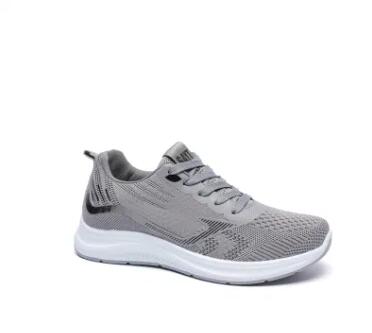How do sports shoes vary based on the specific sport or activity they are designed for
2023-11-03
Sports shoes are designed to cater to the unique demands of various sports and activities. They vary based on the specific sport or activity they are intended for in several ways, including design, materials, support, and performance features. Here's how sports shoes can differ based on the activity:
1. Running Shoes:
- Running shoes are designed for forward motion and typically have cushioning to absorb impact.
- They may have varying levels of cushioning and arch support based on a runner's gait and running style.
- Lightweight and flexible to promote a smooth and efficient stride.
- Usually have breathable uppers to keep feet cool and moisture-wicking properties.
2. Basketball Shoes:
- Basketball shoes provide ankle support to protect against injuries like sprains.
- They have durable outsoles with excellent traction for quick lateral movements.
- High-top or mid-top designs offer extra ankle stability.
- Cushioning and shock absorption are important for jumping and landing.
3. Soccer Cleats:
- Soccer cleats have specialized outsoles with cleats or studs for traction on grass or turf.
- Designed for quick directional changes, dribbling, and ball control.
- Lightweight and streamlined to enhance speed and agility.
- Minimal cushioning to maintain a close feel for the ball.
4. Tennis Shoes:
- Tennis shoes have sturdy, non-marking outsoles to support lateral movements.
- They provide stability for quick starts, stops, and pivots.
- Reinforced toe areas to withstand toe drag during serves and volleys.
- Some models designed for specific court surfaces (hard, clay, grass).
5. Cross-Training Shoes:
- Cross-training shoes are versatile and suitable for a range of activities.
- Offer a balance of stability, cushioning, and support.
- Ideal for activities like weightlifting, aerobics, and gym workouts.
- May have extra lateral support for side-to-side movements.
6. Hiking Boots and Shoes:
- Hiking footwear is built for outdoor terrains and offers ankle support.
- Traction-heavy outsoles provide grip on various surfaces.
- Waterproof or water-resistant options for wet conditions.
- Supportive midsoles for carrying heavy backpacks.
7. Cycling Shoes:
- Cycling shoes are designed to clip into pedals for efficient power transfer.
- They have stiff soles to maximize pedal efficiency.
- Lightweight and aerodynamic for road cycling, while mountain biking shoes are rugged with cleats for off-road grip.
8. Volleyball Shoes:
- Volleyball shoes focus on stability for quick lateral movements and jumps.
- Gum rubber outsoles for grip on indoor courts.
- Low-to-mid-top designs for agility and maneuverability.
9. Golf Shoes:
- Golf shoes typically have soft spikes or cleats to provide traction on the golf course.
- Leather uppers for a classic appearance.
- Designed for walking long distances on the course, requiring comfort and support.
The specific design elements and features of sports shoes are tailored to optimize performance, reduce the risk of injury, and enhance comfort for the respective sport or activity, making it essential to choose the right pair for your needs.



